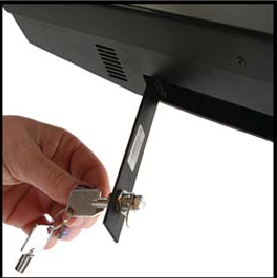Apr
Wireless or USB media players for digital Signage
USB Media player or a wireless solution?
USB media players and wireless media players are one of the key parts of a digital signage solution and, so understanding the difference is essential for your digital signage solution to be a success.
Differences between a wireless media player and a USB media player.

Typical example of a USB media player
Wireless Media Players are media players that are generally are connected to the digital signage display and provide either a back office solution or a site based digital signage solution. These are powered by electricity and plug directly into the screen or using cable extenders can be used for back office control, depending on the application. For example in a bank the content will normally be controlled by one central office, however a QSR (Quick Serve Restaurant) may want to control the content using local produce in the back office. With the digital signage rise in demand, many organisations are looking at the different media players on the market and there use can be restricted to location and who controls the content.
Wireless media player.
These are basically an hard drive with an internet connection, it can be connected to either a hardwired or wireless digital signage network and usually had a large enough capacity hard drive to store all types of content including: Flash MPEG, MP3, WMA, WAV and AC3 audio files. The WIFI media player has the capability to store up to 1000GB of information in addition to displaying the content in true High definition resolution at 1080p. They are connected to the digital displays using an HDMI lead or HDMI cable extenders depending on the application (but care has to be taken when using extenders because if you over step the distance the image quality will reduce dramatically).
USB media player.
A USB media player has an internal storage capacity that depends on the capacity of the CF or SD memory card, this type of device is usually built into the display and is ready to go straight out of the box. The content has to be added manually and this can be done by the manager or franchisee owner and takes around 2 minutes.
The content can be drag n dropped on to a flash drive and then inserted into the media player, then using the remote control the content will over right the original content. Should you wish to schedule different ads at different times of the day, you have to write a playlist in the form of an xml file and this will then allow day parting to occur. The main advantage of a USB media player is that using them requires not technological experience and these tend to be the most cost effective solution.
Bluetooth media player.
Bluetooth media player has relatively new to the digital signage market and these work similarly to the wireless or networked enabled media players for updating the content, but the main difference is how the content reaches the potential customers.
These broadcast the ad to anyone passing the store or that is in range of the Bluetooth signal, this could range from a free coffee with any bacon roll purchased before 9am.
Low pricing of a USB media player.
Due to the USB media player not using any moving parts the devices themselves are more affordable and due to this make a USB media based digital advertising solution a more affordable signage solution for businesses who are looking to use digital signage to promote their brand.

